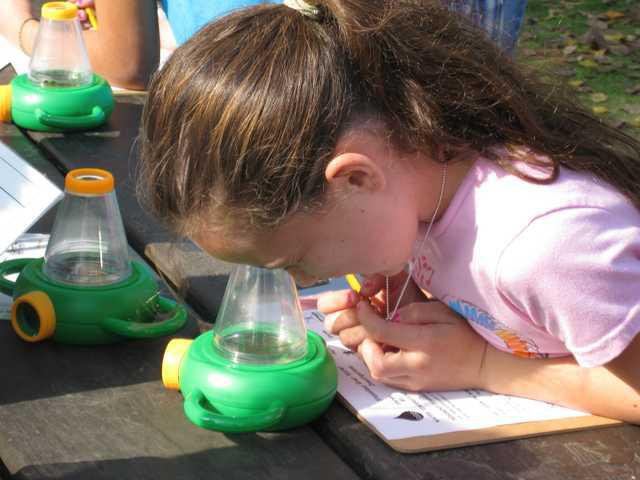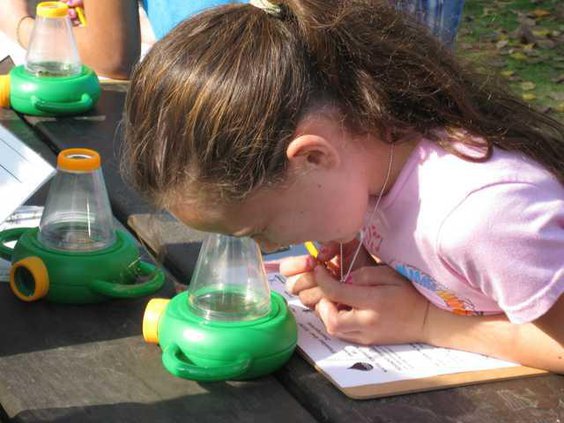Learning about the habits and habitat of spawning Chinook salmon in the Stanislaus River is part of the curriculum for fourth graders in the Oakdale Joint Unified School District. Along with classroom learning, the students also got to see and experience firsthand the salmon lifecycle: how they reproduce, how they live and die, and what their presence in the river has meant throughout history in the area as fourth graders from each school attended a “Salmon Day” at the Stanislaus River in Knights Ferry on Nov. 17, 18, 22, or 23.
The students participated in different labs at riverside, toured the information center and watched a short movie, learning about the history of the area, and observed the spawning fish.
Coordinated this year by OJUSD employee Krista Smith, a new salmon lab was added to the day. This new lab was an “imprinting” exercise to show the students how the salmon remember which river to return to for spawning when they leave the ocean.
At river’s edge, different pieces of blue yarn were strung along in a pattern to represent the different rivers that feed into the Delta. This showed how once the salmon leave the ocean and enter the Delta, they have to choose which path, or river, to take to get back home to spawn at their place of birth. Each “river” of blue yarn was also outfitted with a jar containing a specific and unmarked scent, such as anise (licorice), citrus, coffee, vanilla, or sage to represent the “smells” of each river. The scents were used for the purposes of exercise with the children, not the actual way the salmon identify their river of origin. The children selected from one of a group of scented jars on a table that represented the “smell” of the birth river, then they went to each “river” of blue yarn to see if they could identify which scent matched the one they smelled before. That demonstrated how the salmon were imprinted with knowing which river to choose.
“It gives the kids a real idea of what they’ve got to remember, what the salmon have to remember,” said salmon guide volunteer Bonnie Fogarty.
In another lab, students looked through field microscopes and view boxes at various invertebrates that live in the river. In another, they took a nature hike along the river discovering more about its ecology and the habitat of other animals and plants that live near the river, known as the riparian system. In each of the labs, the students recorded what they had learned, defining different terms, drawing pictures to illustrate, and writing other notes.
The students also played the salmon game where they pretended to be salmon that had to swim through turbines, avoid predators, and jump waterfalls to survive. With only a very few of the large group who made it successfully to the finish, the exercise was to show the students how few salmon actually survive to make it to the spawning ground.
Prior to the trip to the river, all fourth grade students went through a series of classroom lessons at each school that included learning about food chains and habitats needed for the salmon at their different life stages such as the egg stage, alevin, fry, smolt, and adult, to the returning adult and spawning adult stages.
This district-wide project meets numerous California life science educational standards for fourth graders including the study of animals, habitat, life chains, as well as investigation and experimentation, and use of equipment such as microscopes. Since Knights Ferry is a place rich with history, the project also covers California history in the study of geography, water systems, the gold rush, American Indians, and the study of human impact over time.
It is the goal of the Department of Fish and Game as well as the Army Corps of Engineers that care for the Stanislaus River to get more of the salmon to return and help boost the Chinook population. The goal is to have 10,000 spawning salmon in the river each year. Over the past few years, the number has been a fraction of that amount due to various factors including predation, river conditions and temperatures, oceanic factors, and more.





